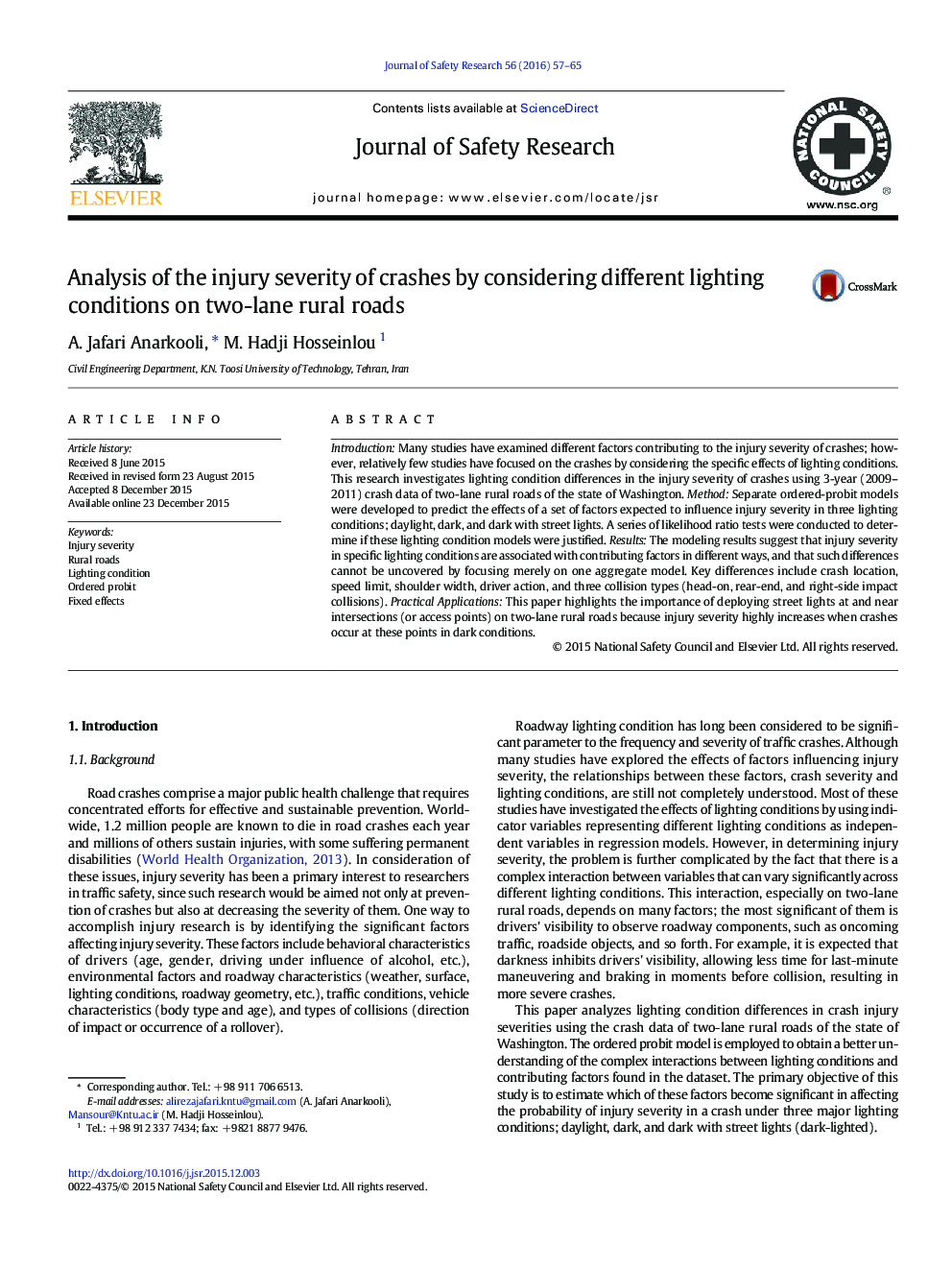| Article ID | Journal | Published Year | Pages | File Type |
|---|---|---|---|---|
| 587328 | Journal of Safety Research | 2016 | 9 Pages |
•We have modeled injury severity based on different lighting conditions.•Injury severity in specific lighting conditions is associated with contributing factors in different ways which such differences cannot be uncovered by focusing merely on one aggregate model.•Speed limit is significantly associated with increased levels of injury severity in daylight conditions, but not in darkness.•Injury severity highly increases when crashes occur at intersections or access points in darkness, but not in a sufficient condition.
IntroductionMany studies have examined different factors contributing to the injury severity of crashes; however, relatively few studies have focused on the crashes by considering the specific effects of lighting conditions. This research investigates lighting condition differences in the injury severity of crashes using 3-year (2009–2011) crash data of two-lane rural roads of the state of Washington.MethodSeparate ordered-probit models were developed to predict the effects of a set of factors expected to influence injury severity in three lighting conditions; daylight, dark, and dark with street lights. A series of likelihood ratio tests were conducted to determine if these lighting condition models were justified.ResultsThe modeling results suggest that injury severity in specific lighting conditions are associated with contributing factors in different ways, and that such differences cannot be uncovered by focusing merely on one aggregate model. Key differences include crash location, speed limit, shoulder width, driver action, and three collision types (head-on, rear-end, and right-side impact collisions).Practical ApplicationsThis paper highlights the importance of deploying street lights at and near intersections (or access points) on two-lane rural roads because injury severity highly increases when crashes occur at these points in dark conditions.
